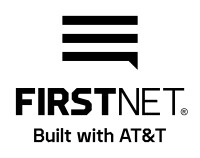WASHINGTON — and the FirstNet Health and Wellness Coalition™ (FNHWC) have identified the major barriers to mental health program adoption among first responder agencies and developed 5 key recommendations to improve the health and wellness of public safety in the new white paper, .
Based on lessons learned from in its first 3 years and feedback from emergency responders around the country, the white paper establishes tangible next steps to better implement health and wellness programs and lays the foundation for public safety legislative advocacy going forward.
What are the recommendations? The issues facing our first responders are complex and don’t have a “one size fits all” solution. Endorsed by more than 2 dozen public safety organizations and over 40 collaborators, the 5 recommendations target all levels of cultural change and are based on responses gathered from the FirstNet Needs Assessment Survey and a body of evidence-supported strategies. These include:
- Deepening leadership engagement and equipping them with the skills to help all levels of responders see value in training and lifestyle changes through leadership modeling health and wellness behaviors and regularly reinforcing the importance of these practices to their department.
- Integrating wellness education into training from the time responders are at the academy through retirement. Instead of being considered an added benefit, wellness programs need to be woven into the fabric of responders’ daily lives and their career progression.
- Allocating dedicated funding and resources to implement evidence-based solutions from agencies, both local and national, to create systematic changes. While grants fill a huge void in funding resources, they are not enough.
- Defining national wellness standards on evidence-based health and wellness programs and provide access to technical assistance centers to provide additional services for responders.
- Better communications between national and local first responder agencies and from leadership to share best practices to encourage health and wellness opportunities.
Why is this important? Compared to the general population, first responders, including police, fire, emergency telecommunicators, emergency management, frontline healthcare personnel and others, experience higher rates of depression, post-traumatic stress, burnout, anxiety and other issues1 that can lead to secondary or tertiary health risks like cardiovascular disease, cancer, or disordered sleep.
- For law enforcement, there is a more than 20-year difference in life expectancy compared to the average American male.2
- It’s estimated that 20-25% of all first responders experience post-traumatic stress.3
- Death by suicide in this group often outnumbers traditional line-of-duty deaths.4
- Nurses and other frontline healthcare personnel have long been at an increased risk of suicide than the general population.5
What is the FNWHC? Through its work with public safety, leadership at FirstNet—the only nationwide communications network built with and for public safety—recognized the need to dedicate resources towards first responder mental health. Established by AT&T in 2020, the FNHWC brings together over 2 dozen national safety organizations representing more than 5.1 million first responders across disciplines like fire, police, EMS, 9-1-1 and emergency response to assess, plan, integrate and evaluate strategies and solutions that support first responder wellness.












